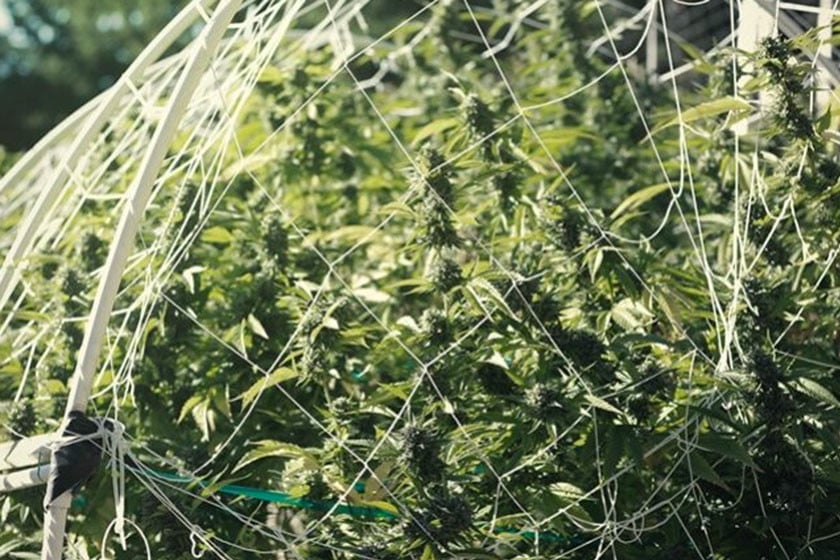.

Why Are My Cannabis Flowers Growing Too Slowly?
Everything went great throughout the vegetative phase, but things slowed down considerably during bloom. There are numerous reason why your cannabis plants suddenly stopped growing before your eyes, including pests, diseases, and sugar (you read that right). Keep reading to discover what causes flowers to take too long, and what to do about it.
Are your weed flowers taking forever to mature? Has the blooming phase far exceeded the estimated time stated on the seed packet? Well, worry not. We’re about to explain why this is happening and exactly what you can do to correct things.
Contents:
- Cannabis flowers maturing slowly: three common factors
- Light burn and light stress slow weed blooming
- Pest infestations affect flowering
- Fungal and bacterial diseases are a big issue
- Over-fertilisation may slow weed flowering
- A lack of sugar can cause snail-paced buds
- Protect your cannabis flowers from physical damage
- Leaving plants flowering for too long
- Problem solved: enjoy a trouble-free flowering phase
First things first, let’s cover the very basics. Cannabis plants rely on optimal temperature ranges to facilitate proper growth and flowering. During the blooming phase, try to maintain a steady temperature of 20–26°C. Next up, you need to dial in your watering. Too little water can cause stress that impacts flower development, whereas too much can increase the risk of diseases. To keep things simple, you should only reapply water when the top 3cm of soil becomes completely dry—simply place your finger in the soil to test this.
If changing these parameters fixes your problem, then congratulations—you got out easy! If you’re already a master at balancing these variables, read on to discover the root cause of your flowering issue.
1. Cannabis Flowers Maturing Slowly: Three Common Factors
With the usual suspects out of the way, let’s explore some of the other key culprits that cause cannabis plants to flower slowly.
Genetics
Some cannabis strains simply take longer to flower than others. Selecting varieties with this in mind will drastically reduce blooming times. Large sativa photoperiod strains take over two months to reach the end of the flowering phase.
Solution: If you're looking to get flowers quickly, you can choose from our selection of autoflower cultivars, our line of F1 hybrids, or our fast-flowering strains. These varieties can go from sprout to harvest in just a few weeks.
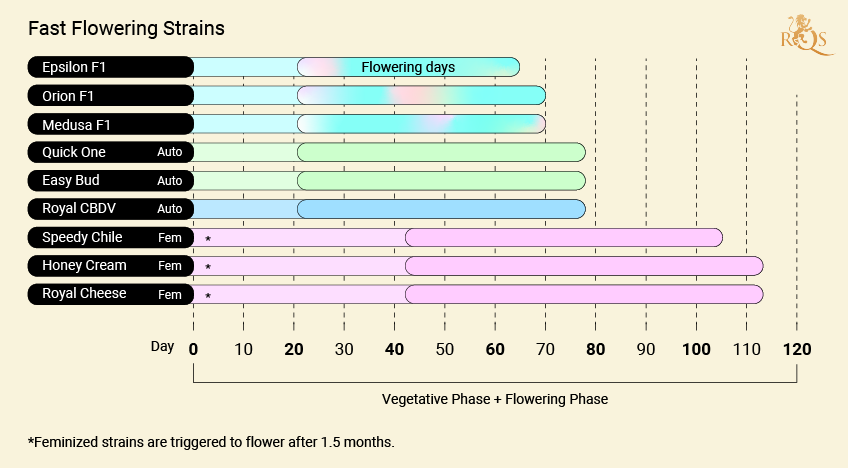

Nutritional Deficiencies
Cannabis plants require different nutrients to fulfil different physiological processes, including flowering. A lack of key minerals during blooming can impact flower development and speed of maturity.
Solution: Ensure your plants have ample access to phosphorus, potassium, calcium, magnesium, and sulphur during the flowering phase.


Long Light Cycles
Whereas autoflowering cannabis plants don’t require changes in light exposure to flower, photoperiod plants depend on a reduced light cycle that mimics the end of the growing season outdoors. Leaving your lights on for too long each day can lengthen the flowering period and even force plants to re-veg. Additionally, growers tend to disturb the dark cycle by checking on the plants, causing the plants to stress unnecessarily.
Solution: Maintain a correct flowering light cycle; expose your plants to no more than 12 hours of light per day, and avoid interrupting the dark cycle.
2. Light Burn and Light Stress Slow Weed Blooming
Light burn and light stress are two forms of abiotic (non-living) stress that can interfere with optimal growth and flowering. Light burn directly damages flowering tissue, resulting in yellowing and browning. While light stress is less severe, it can still mess with flower development,
Solution: Apply LST to your plants to keep the canopy horizontal and to prevent colas from growing too close to your light source.
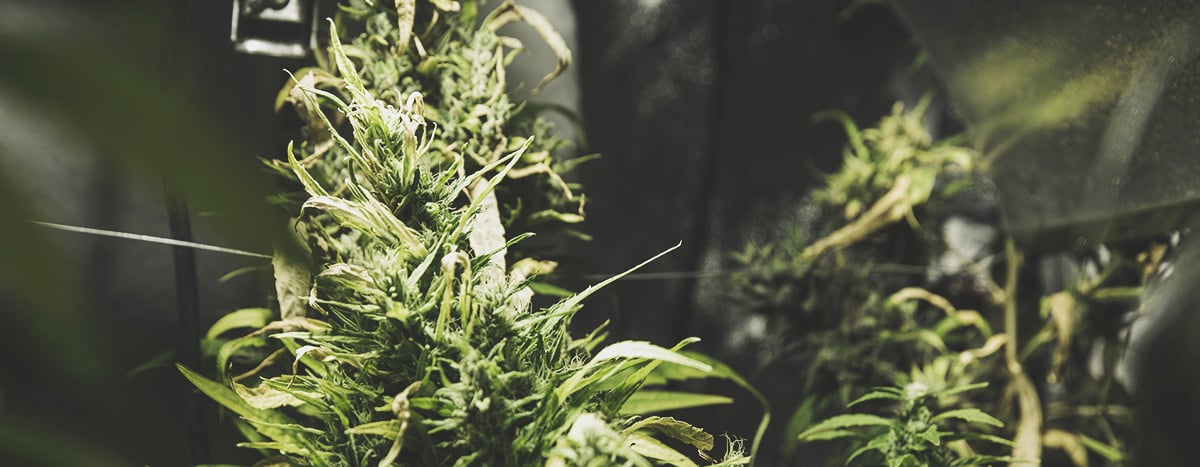
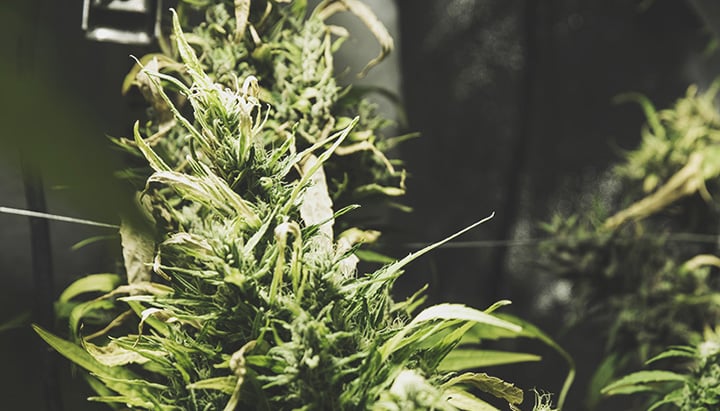
3. Pest Infestations Affect Flowering
Pests are one of the biggest threats when it comes to growing weed. Although they primarily affect outdoor plants, they can also work their way indoors. There are many different types of cannabis pests, but all of them produce a degree of stress. Left to inflict enough damage, different species can interfere with nutrient uptake and transport, photosynthesis, and leaf and flower development. By sucking out resin and leaving residue on plant tissue, pests can also give rise to different diseases. The stress caused by pests can delay the onset of flowering, reduce resin production, and also stop flowering altogether.
Solution: Sow companion plants close to your outdoor crop to draw in beneficial predatory insects. Consider netting your plants outdoors, or growing them in protected greenhouses and polytunnels. Use insect screens and sticky traps to prevent and manage indoor infestations.

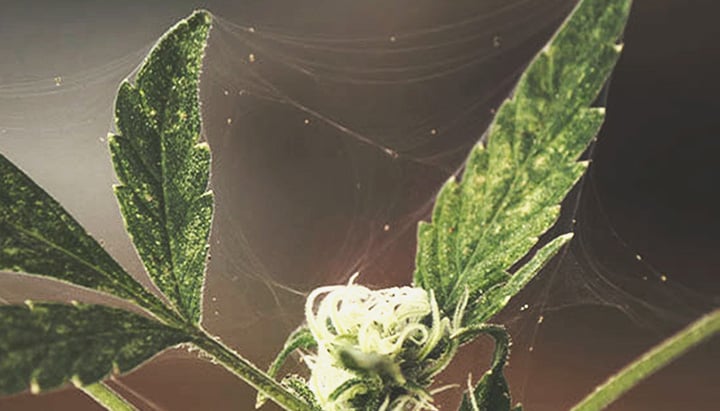
4. Fungal and Bacterial Diseases Are a Big Issue
Pests are hard to deal with—but at least you can see most of them. Microbial pathogens, including several species of bacteria and fungi, are much harder to detect until things start to get serious. Some of the most common and damaging cannabis pathogens include botrytis (bud rot) and fusarium (root rot). While less physically damaging, powdery mildew can also render cannabis buds unusable. During the development of these diseases, plants experience profound levels of stress as their cells are attacked and destroyed. Root diseases impact the uptake of nutrients and water, whereas those that directly target the flowers impact bud development.
Solution: Manage humidity levels, especially during the flowering period. Protect your plants from excessive rainfall outdoors, especially as your plants near the end of the flowering phase. Use routine organic sprays during the vegetative phase as a pre-emptive measure, including neem oil as a natural fungicide.


5. Over-Fertilisation May Slow Weed Flowering
You probably think you’re doing your weed plants a favour by bombarding them with the right nutrients during the blooming stage. However, just as too few nutrients can cause issues, too many can also result in slow flowering growth. Why? Because high levels of certain nutrients can cause a lockout of others. For example, excess nitrogen can resist access to phosphorus—a vital nutrient during bloom. Over-fertilization can cause stress on plants due to toxicity and cause slow and stunted growth. The over-application of certain minerals can also cause soil pH to drop, which can also interfere with nutrient uptake.
Solution: Apply synthetic bottled nutrients according to the manufacturer's instructions. If possible, transition to organic nutrients that break down naturally over time. Keep an eye on your soil pH and aim for an optimal range of 6.0–7.0.
6. A Lack of Sugar Can Cause Snail-Paced Buds
You’re used to giving your plants NPK and micronutrients—not sugar. However, simple carbs can help to kick your plant into overdrive during weed blooming. Think about it, plants produce their own sugars during photosynthesis. However, issues with photosynthesis due to a lack of light or other forms of stress can reduce the amount of cell-powering sugar that plants can create. Obviously, this creates a metabolic problem during the flowering phase of the growing cycle.
Solution: Applying sources of sugar, such as molasses, to your growing medium in the appropriate quantities will give your plants access to sugars that they use to deal with environmental stress. These applications act as osmotic agents that help plants hold onto water. Sugar also feeds beneficial soil life, including fungi. These organisms give plants increased access to important flowering nutrients, including phosphorus.

7. Protect Your Cannabis Flowers From Physical Damage
If it doesn’t kill your plant outright, physical damage can drastically impact flower development. Although cannabis plants develop a thick and woody main stem quite quickly, side branches and petioles remain relatively delicate during the entire growing cycle. Strong winds, falling objects, and general accidents can damage these structures. Because branches contain the vasculature that transports nutrients and water, snapping or injuring them can restrict developing buds from accessing these substances. Damaged petioles, the small stems that join leaves to plants, can also cut off the valuable sugars made during photosynthesis. Also, avoid stressing your plant with HST techniques at this stage.
Solution: Learn how to keep your weed plants from falling over, and protect them from external forces. Trellises and stakes are effective means of keeping your plants upright during adverse weather, and when they become top-heavy during late flowering. Tomato cages will also help to prevent knocks and bumps. If you need to train your plant, bend it gently or start earlier next time.
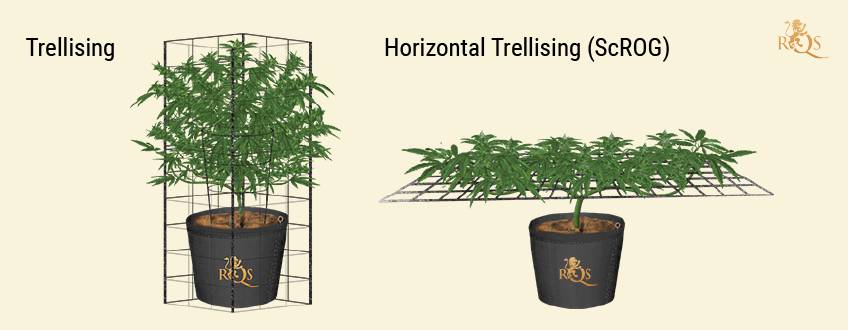

8. Leaving Plants Flowering For Too Long
Are your specimens really taking too long to finish blooming, or are you simply leaving plants in flower for too long? If you let your buds get too mature, you run the risk of them undergoing rodelization. Cannabis plants naturally want to reproduce. When they aren’t fertilised by male pollen, some plants get so stressed that they become hermaphrodites; they put out male flowers in a last-ditch attempt to pollinate themselves. If successful, this will result in poor-quality buds filled with seeds. After raising your plant through the entire growing cycle, you don’t want all of your hard work to end like this.
Solution: Get to know the signs of when to harvest to make sure you aren’t leaving your buds on their branches past the ideal time. These signs include milky white trichomes and orange pistils. Ensure you harvest and dry your flowers before they get too mature.


Problem Solved: Enjoy A Trouble-Free Flowering Phase
Now you’re aware of all the issues that can cause cannabis plants to flower for too long. But it’s not all bad news—you're also equipped with the solutions to all of these problems. Remember, keep your temperature and humidity in optimal ranges, make sure you’re supplying enough light (but not too much), sow companion plants to deal with pests, and make sure you harvest your buds at the proper time to prevent them from getting too mature.





























